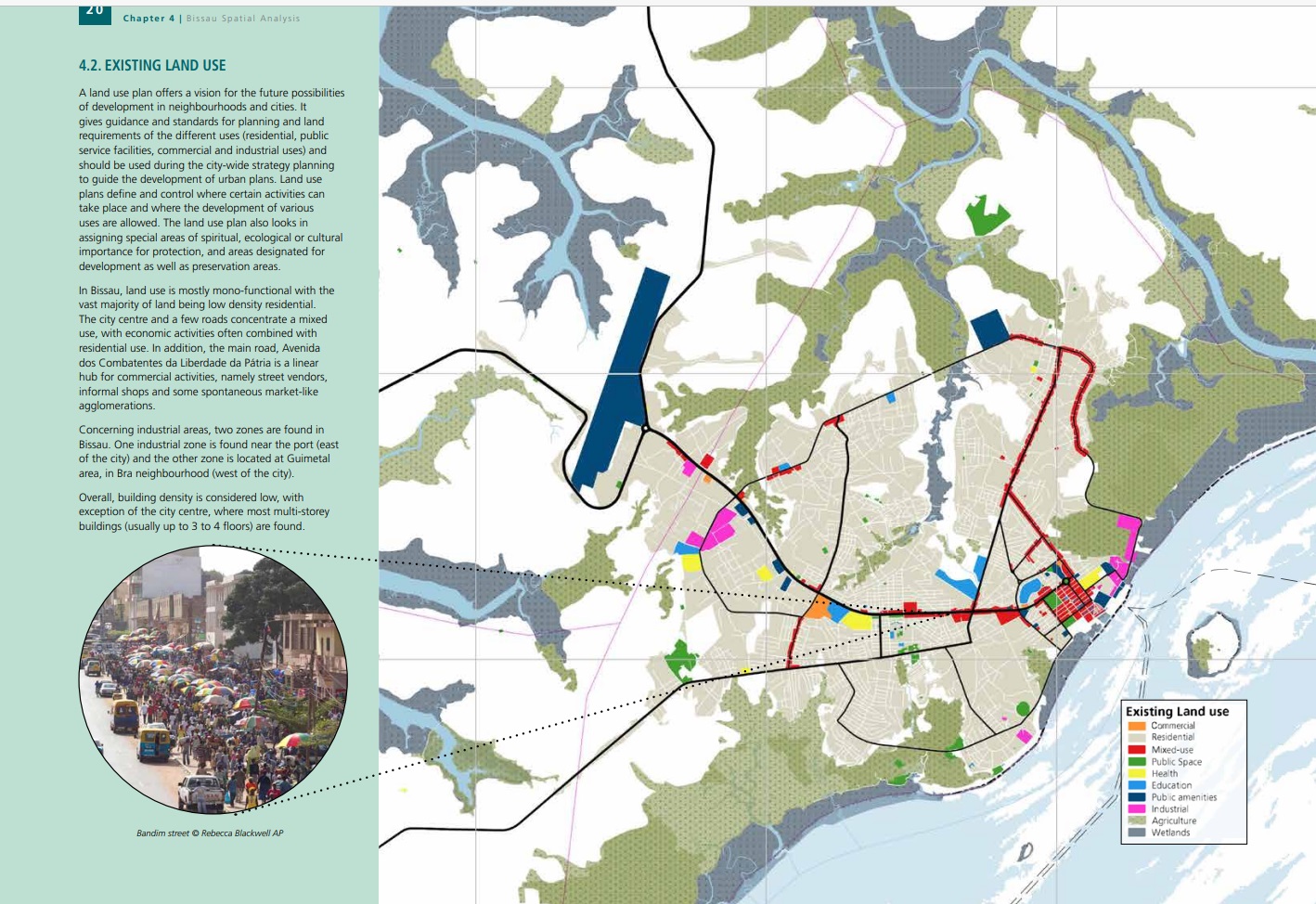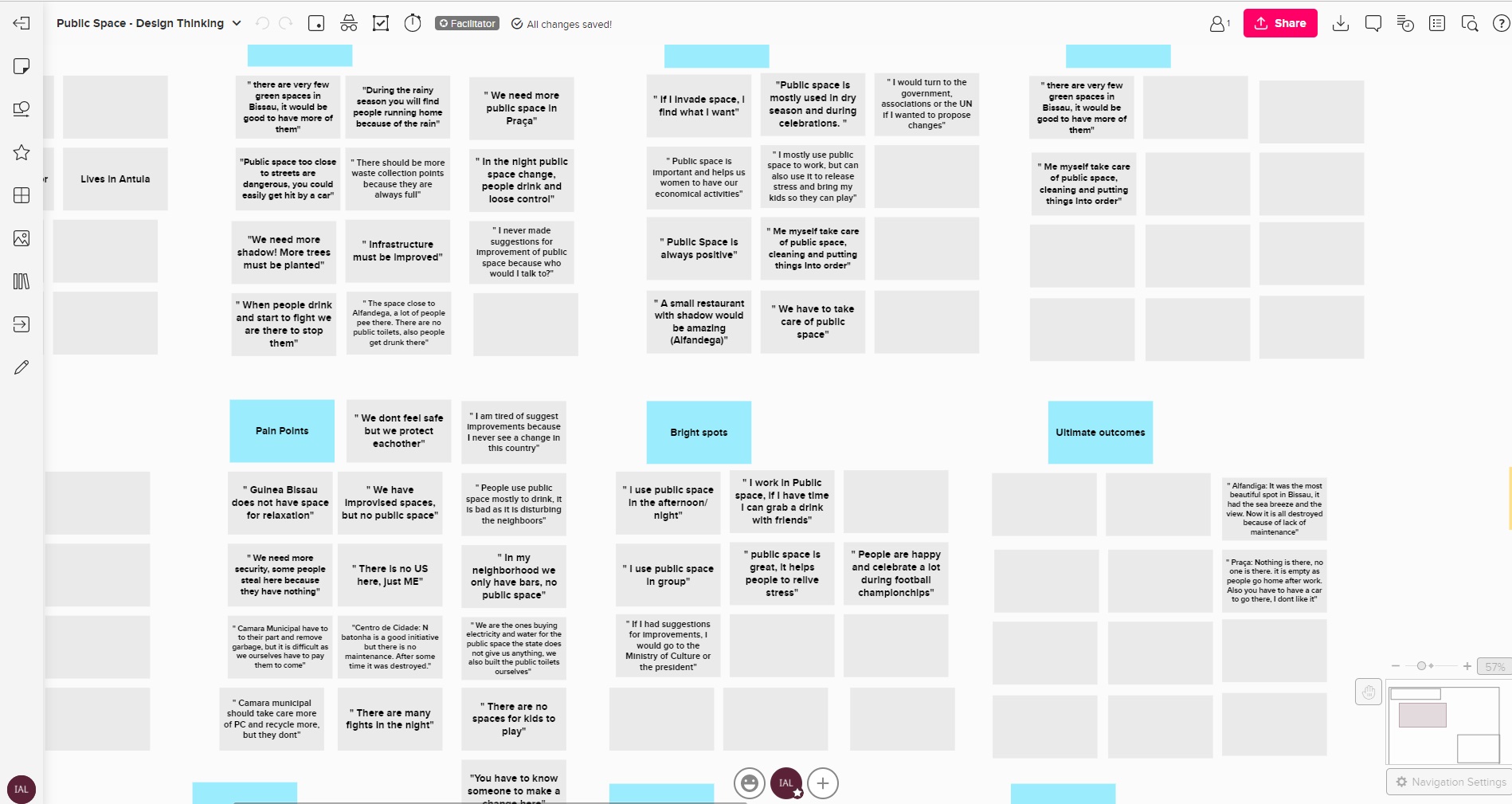Disclaimer:
Please be aware that the content herein has not been peer reviewed. It consists of personal reflections, insights, and learnings of the contributor(s). It may not be exhaustive, nor does it aim to be authoritative knowledge.
Title
Please provide a name for your action learning plan.
Reinventing public space through co-creation
Challenge statement
Challenge type: If you are working on multiple challenges, please indicate if this is your "big bet" or "exploratory" challenge.
Please note: we ask you to only submit a maximum of 3 challenges - 1x Big Bet, 2x Exploratory. Each challenge must be submitted individually.
EXPLORATORY
Challenge statement: What is your challenge? (Please answer in specific terms: "Our challenge is that...”.)
Our challenge is to learn how public space is perceived by the citizens in Bissau and create conditions for participatory urban design (both form and function) and planning where residents of an area can share their views, experiences, wishes, and skills with the municipality and other stakeholders who are responsible for building public spaces.
Background: What is the history of your challenge? What is causing or driving it? Who is involved? How does the current situation look like? What undesired effects does it produce?
One of the components of achieving sustainable urbanization is ensuring we create livable cities. This requires citizens to be involved in decision making processes regarding planning and design of public spaces. Public spaces need to be open and accessible to people. Such places can encourage collectivism and interactions, and can also create a common ground for art, well-being, and innovation while strengthening collective identity and historical roots.
Despite various attempts participatory urban design and planning practices have not been widely adopted in Guinea Bissau. The absence of such practices often leads to situations where public spaces end up being underutilized or abandoned and degraded. The problems of poor design and planning stem partly from a top-down approach to decision-making by local authorities. The current political climate is not helping the situation either, more and more citizens feel disempowered. The gap between decision-makers and residents is widening which leads to disjointed policy making at different scales. Moreover, local knowledge, memory and talent are not sufficiently utilized; using them could improve function, ownership and sustainability.
It can be possible to address these problems by increasing citizen engagement in decision making and one way to do that is to create an environment in which communities can take part in designing something – in this case, a public space – in collaboration with a local authority. We need collaborative design expertise which can help solve the above mentioned problems by creating a platform to design a public space around citizens’ needs and desires. Revitalizing a dysfunctional public space could be a way to show how co-creation can lead to better places and subsequently policies.
Quantitative evidence: What (official) data sources do you have on this challenge that better exemplifies the importance and urgency of this frontier challenge? You can add text, a link, or a picture.
Bissau 2030 Sustainable Development Plan: https://drive.google.com/file/d/1G_i_ADMWNkzAonYdHZDh2PpQ-AdiVhFh/view?usp=sharing
Qualitative evidence: What weak signals have you recently spotted that characterizes its urgency? Please provide qualitative information that better exemplifies the importance and urgency of this frontier challenge. You can add text, a link, or a picture.
Design thinking Interviews on Public space in Bissau showed that there is a general perception that there is a lack of public, green and recreational spaces in the city, something that affects the wellbeing of the citizens: Public Space - Design Thinking • UNDP Accelerator Labs WS2 (mural.co)
Facebook conversation on public space in Bissau:
https://hi-in.facebook.com/PNUDGB/posts/4122595551096065
Value proposition: What added value or unique value proposition is your Accelerator Lab bringing to solving this challenge? Why is it your Lab that needs to work on this challenge and not other actors within UNDP, other stakeholders in the country respectively? Why is it worth investing resources to this challenge?
The Lab is bringing an added value to public spaces by collaborating with unusual partners such as KTH School of Architecture and Lusófona University to view the problem through a new lens together with those who live and operate closest to the problem, in hopes of producing new and innovative outputs. Methodologies we hope to use includes: placemaking, Design Thinking and Collective Intelligence. Usually, the topic of public space falls outside the work of the UNDP clusters, the Lab saw an opportunity to join hands with academia (national and international) as well as UN Habitat, to take on the challenge.
Short “tweet” summary: We would like to tweet what you are working on, can you summarize your challenge in a maximum of 280 characters?
Reinventing public space in Guinea Bissau for the wellbeing of the public
Partners
Who are your top 5 partners for this challenge? Please submit from MOST to LEAST important and state Name, Sector and a brief description of the (intended) collaboration.
Please state the name of the Parter:
KTH Royal Institute of Technology - School of Architecture, Lusófona University, UN Habitat
What sector does our partner belong to?
Academia
Please provide a brief description of the collaboration.
The Lab, together with the City Council of Bissau, UN Habitat and students from KTH School of Architecture and Lusófona University, will explore the topic of public space in the city of Bissau through participatory processes. The Lab will use the scientific knowledge of the Universities to delve deeper into the challenge and after the mapping and sensing phase, the students will propose spatial and social solutions for the improvement of public space in Bissau.
Is this a new and unusual partner for UNDP?
Yes
Learning questions
Learning question: What is your learning question for this challenge? What do you need to know or understand to work on your challenge statement?
What is the perception of public space in Bissau? What is the use of public spaces in Bissau? How can the co-creation / restauration of public spaces improve livelihoods? How can universities (national and international) play a part in rethinking urban challenges in Guinea Bissau? How can we decrease the gap between citizens and decision makers when it comes to the creation of public space?
To what stage(s) in the learning cycle does your learning question relate?
Sense, Explore
Usage of methods: Relating to your choice above, how will you use your methods & tools for this learning question? What value do these add in answering your learning question?
Design Thinking, Collective Intelligence and Co-Creation and participatory design will be used to structure the process and generate insights about the challenges faced as well as possible solutions. Visual thinking and mapping will be used as a supportive tool when engaging with different stakeholder and while collecting data. The value that these methods will add to our learning question is that we will be able to delve deeper into data and understanding the complexities of the problem and well as designing tests that can generate learning about different aspects of the challenge.
Existing data gaps: Relating to your choice above, what existing gaps in data or information do these new sources of data addressing? What value do these add in answering your learning question?
There is a lack of geospatial data in the country.
Direct Interviews – There is a lack of qualitative data on the topic. Using a design thinking methodology we will work with direct interviews to collect user views on the topic of public space.
Engagement with local youth – a very important view for the future of the development of the country, it will be crucial for us to have this perspective and also engage them in mapping exercises.
Visual mapping – It will be important for the learning cycle to have a visual mapping and understanding of the sites of intervention
Closing
Early leads to grow: Think about the possible grow phase for this challenge - who might benefit from your work on this challenge or who might be the champions in your country that you should inform or collaborate with early on to help you grow this challenge?
The city council is a crucial partner for the grow phase of this learning cycle as they are the ones responsible for planning of the city. Citizens of Bissau as they are the ones inhabiting the city and using the spaces, it might also lie in their interest to develop an inclusive and livable city.
END OF ACTION LEARNING PLAN: Thank you! The form saves automatically and your submission has been recorded. You may now exit this window.


 3Good health and well-being
3Good health and well-being


 12Responsible consumption and production
12Responsible consumption and production
Comments
Log in to add a comment or reply.